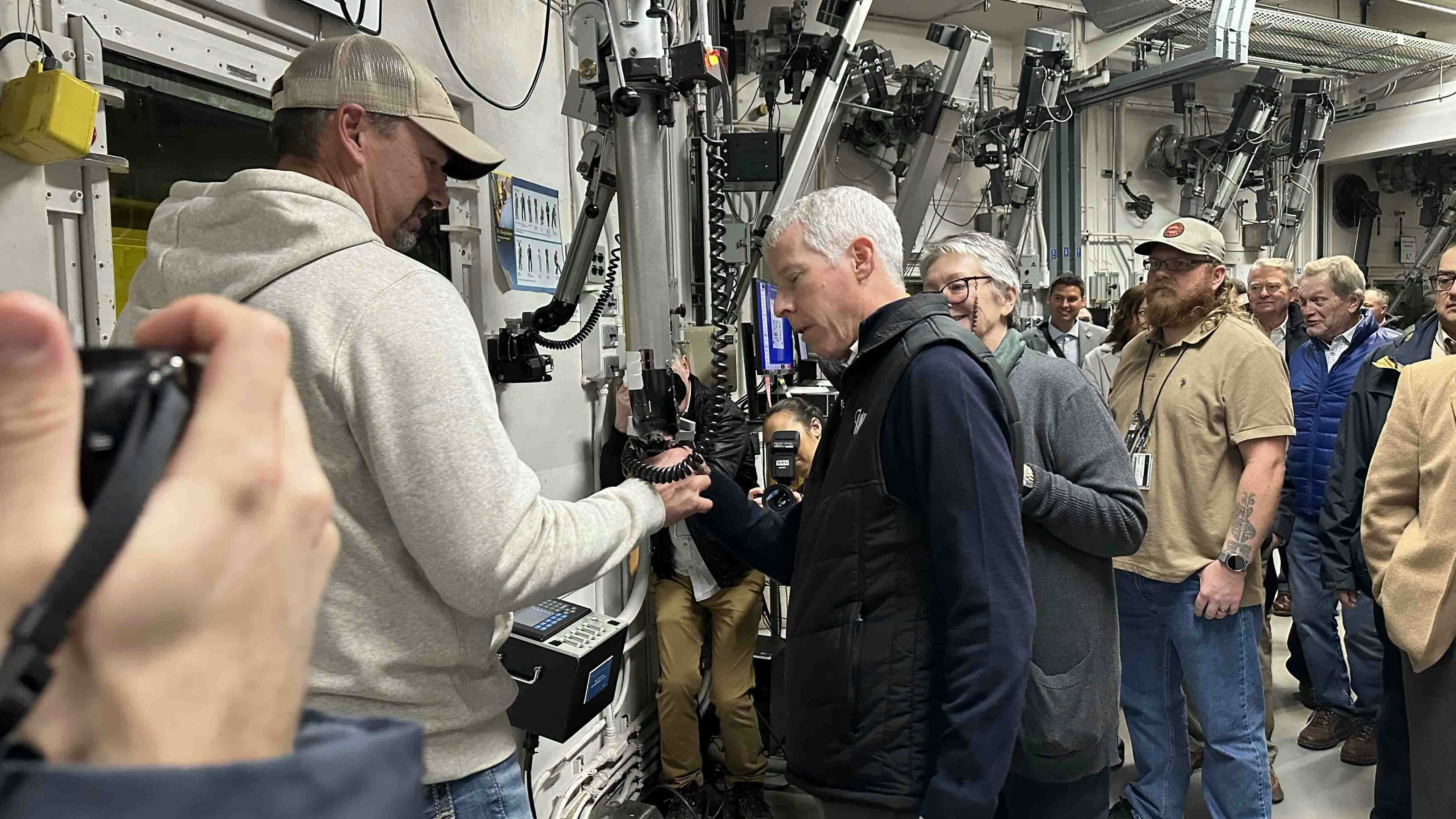Denver International Airport is considering nuclear power to fuel its operations and future growth — a move that could attract interest from Wyoming companies manufacturing small modular reactors (SMRs).
DIA announced this month it would hire a firm to study the feasibility of building or assembling a small modular nuclear reactor on its grounds, as part of the airport’s goal to become the world’s greenest airport and achieve energy independence.
The announcement sparked widespread attention and prompted DIA to delay the search, giving the Denver City Council and nearby neighborhoods time to learn more about the plan and offer feedback, airport officials told Cowboy State Daily in an email.
Interest in exploring nuclear power remains strong, backed by Denver Mayor Mike Johnston, who said he shares many of the same concerns and questions as residents.
“Denver leads with bold ideas, and our vision for the future of our airport is no exception,” Johnston said in a statement. “As we work to make (DIA) the greenest airport in the world, we must explore every innovative solution available to meet the demands of a growing city and a changing climate.
"Studying the potential of small modular nuclear reactors is a forward-looking step in understanding how we can deliver reliable, clean energy at scale. This is about thoughtful planning, long-term sustainability, and our commitment to a healthier planet for generations to come.”
Nuclear Trend
Industry experts say two factors are driving DIA’s interest in nuclear power.
Traditional nuclear plants require massive reactors and years of construction, but SMRs are a new generation of facilities designed to be small and even portable. They typically produce up to 300 megawatts of power — about a third of what conventional nuclear reactors generate.
Their modular, compact design means they can be quickly assembled on site without a major yearslong construction project.
The Trump administration has pushed to speed up the permitting process for SMRs, spurring even greater interest in nuclear energy, which produces zero carbon emissions.
For DIA, which needs both clean and reliable energy, nuclear is worth investigating.
Syed Bahauddin Alam, assistant professor of nuclear engineering at the University of Illinois, said continuous power is non-negotiable at an airport, where flights and lives depend on steady electricity.
“You need something that doesn’t stop,” Alam told Cowboy State Daily. “Solar is highly dependent on the weather. Wind also depends on the climate. For 24/7 power at an airport, reliability is the first consideration from an engineering perspective.
“What’s the energy source that can provide reliable power?”
DIA officials say SMRs deserve attention for their potential to offer a safe, scalable and possibly cost-effective approach to nuclear power, complementing intermittent sources like wind and solar.
Powering DIA would require about 400 megawatts, according to estimates. The airport, which served a record 82.3 million passengers last year, is actively planning for 2045 and beyond, expecting more than 120 million passengers annually.
Wyoming Manufacturers
Several Wyoming-connected firms are building or planning to build SMRs, including Lynchburg, Virginia-based BWXT. The company’s Advanced Technologies Product Development Director Erik Nygaard said he’s not surprised DIA is considering the technology.
“This is part of a broader trend emerging across the energy landscape,” Nygaard told Cowboy State Daily.
Asked what sort of reactor DIA might need, Nygaard said it would depend on the airport’s current and future needs.
“What we always do when we talk to parties is, they think they know what they want,” Nygaard said. “But we usually try to take a step back and say, ‘Well, what’s your current energy mix look like? How much energy do you need? How much electricity do you need today? How much do you need in the future? What are some capital plans you have that might increase or decrease your use?
"And in some places, especially cold weather climates, you also have heating needs, and some nuclear systems are very unique in that they can also provide heat, not just electricity.”’
Nygaard noted SMRs are diverse and designed to solve problems in various ways.
“Our systems are very flexible,” he said.
DIA officials said the planned feasibility study will gather all the variables — energy demand, types of reactors available, projected costs and funding sources, and environmental and safety risks — to determine if nuclear power is a viable option for the airport.
The study could cost up to $1.25 million and will analyze whether SMRs can help DIA meet future energy and sustainability goals.
“We recognize that the technology is still relatively new and there is much to learn, which is why (DIA) will conduct a feasibility study to gather facts and information about whether SMRs could potentially help the airport meet its energy demand and clean energy goals in the future, as well as potential challenges,” DIA CEO Phil Washington said in a statement.
“We know that anything we would do would require significant investment and that SMRs are complex,” he added. “So, we are keeping an open mind, learning more and continuing to responsibly plan for the airport’s future.”
Justin George can be reached at justin@cowboystatedaily.com.





